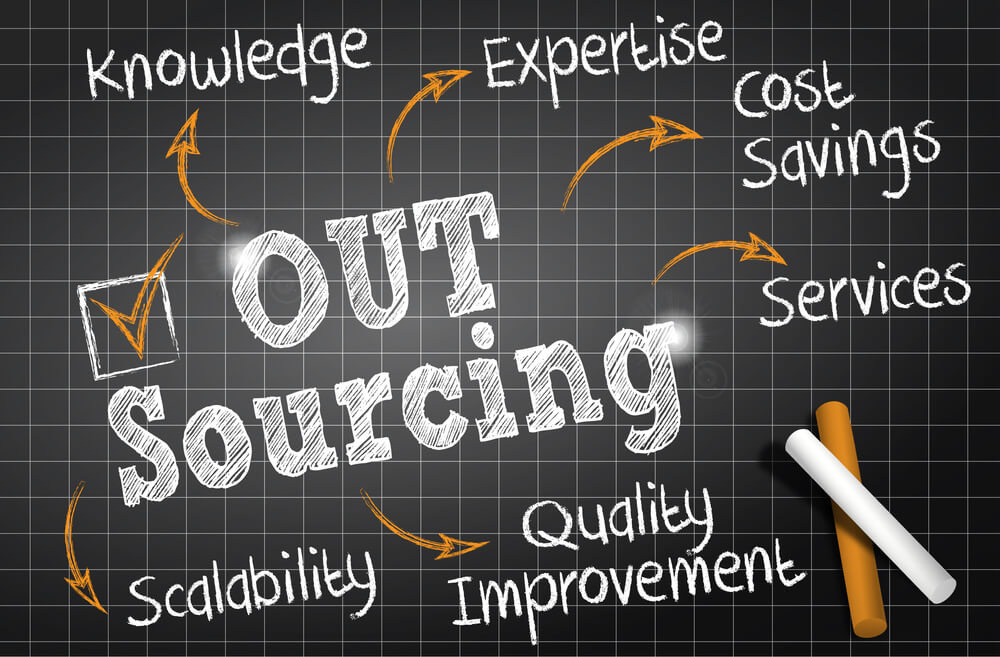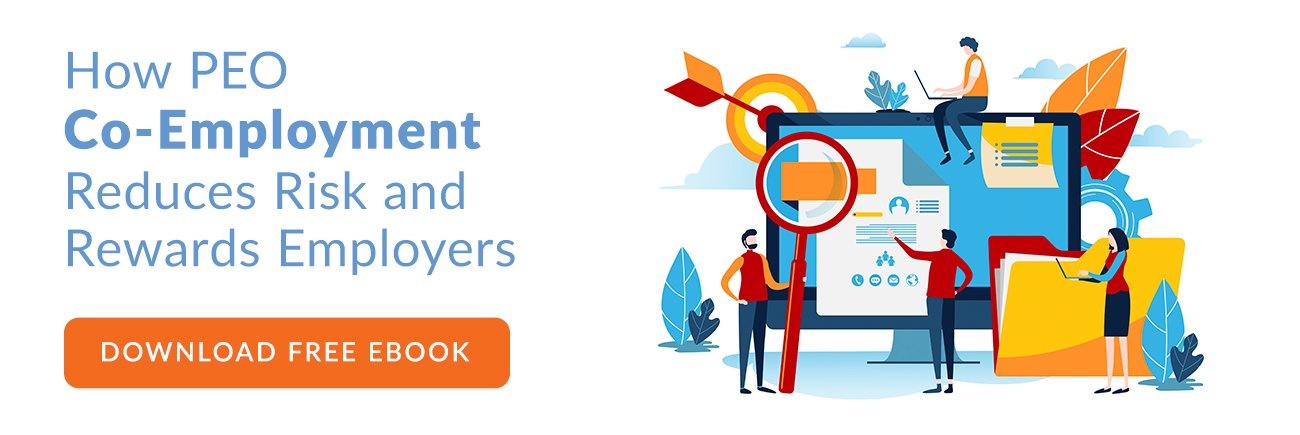The cost of outsourced HR varies widely. In the United States, fees range from less than $300 per employee per year to over $7,000 per employee per year (up to $583 per employee per month).
Generally, you should expect to pay between 2% and 15% of your payroll to your Human Resources outsourcing company.
Obviously, that's a huge gap. But when done correctly, it comes with a positive return on investment (ROI).
So, where does this difference in outsourcing costs come from?
Until now, we haven't gone deep into the nitty-gritty of outsourced HR cost savings. But with over 17 million Google results, it's hard to ignore the question "How much does outsourcing HR cost?"
Let's look at the three core HR outsourcing pricing models to help you better gauge the price of outsourcing.
The Big Three HR Outsourcing Price Models
Low Price, Low Service (a.k.a "The Payroll Processors")
Fifty-four percent of small business owners admit there's room for improvement in their payroll processes. So, it shouldn't be surprising that payroll is one of the most outsourced tasks.
For some businesses, payroll processors may seem like a golden egg. They handle the increasingly complex task of payroll administration, and you handle the rest of your burdens. Payroll processors are often the cheapest outsourced HR solution.
But getting a positive Return-on-Investment (ROI) is challenging when you outsource only a single HR task.
Think economies-of-scale: the more tasks you outsource, the higher your ROI stacks. So, it's not unheard of for businesses to lose money using a payroll processor.
Of course, the payroll processor removes headaches and helps you focus on more significant business tasks. And those intangible benefits may be huge for your company. So, some businesses find payroll processors worth the investment.
Typically, payroll processing companies pitch their non-ROI-related benefits (e.g., compliance, tax, customer support, etc.) to help ease some friction. You won't pay too much for payroll processing, but you won't see much return either.
Instead of using this price model, you may want to turn to outsourcing companies that genuinely boost your ROI. For example, you may want a company that offers benefits administration and more to help you get the most from payroll service providers.
High Price, High Service (a.k.a "The National PEO Chains")
Once you move into the high-service category, you're using a Professional Employer Organization (PEO). These outsourced HR solutions can handle various HR administrative tasks, and they'll take over all of the HR responsibilities that you want outsourced.
And what about return on investment?
According to a survey by the National Association of Professional Employer Organizations (NAPEO), using a PEO provides businesses with an average ROI of 27%.
These cost-savings come from a variety of sources:
- PEOs prevent you from having to hire additional on-site HR professionals.
- PEO healthcare plans are negotiated using economies of scale from all the businesses they work with.
- You get access to lower SUTA tax rates.
- You get access to cost-savings on workers compensation insurance.
- Payroll processing mistakes are reduced when you partner with a PEO.
- PEOs are the only HR outsourcing provider that can remit your payroll taxes for you
- Well-serviced HR departments lead to lower attrition and higher retention rates.
- Since your PEO will handle compliance, you minimize your risk and regulatory burden.
NAPEO estimates that a PEO can save your business an average of $1,775 per year per full-time employee (FTE). These savings come primarily from:
- Internal HR Salaries/Benefits: PEOs take over many HR responsibilities, which can lead to savings in internal HR salaries and benefits. This represents a significant portion of the savings, amounting to 54% of the total average annual cost savings per FTE. In monetary terms, this translates to an average savings of $965 per FTE.
- Health Benefits Costs: One of the major advantages of partnering with a PEO is the ability to secure better rates for health benefits due to the PEO's larger scale and bargaining power. Health benefits costs account for 37% of the total average annual cost savings per FTE, which equates to an average savings of $654 per employee.
- Other External HR Expenditures: PEOs can also help reduce additional external HR-related costs like payroll and benefits administration, which comprise 5% of the total average annual cost savings. This results in an average savings of $90 per FTE.
- Workers’ Compensation Costs: PEOs often have expertise in managing workers' compensation claims and can secure better rates. This category contributes to 4% of the total average annual cost savings, translating to an average savings of $66 per FTE.
These savings don't even count how PEOs improve a company's ability to attract, engage, and retain top talent.
Unfortunately, high-cost, high-service PEOs cost upwards of $1,395 per year per FTE. So, the bulk of your cost savings disintegrate. This is due to two high-cost pricing models:
- Charging is based on a percentage of gross payroll
- Charging is based on an ad-hoc per-employee, per-check basis that's based on how much the employees make
Both models are highly variable and can result in significant costs for your company.
Instead of a national PEO with an inflated monthly charge per employee, you may want services that help further maximize your ROI through an ideal payment model.
One way to help reduce your monthly fee and save more time and money is to turn to a local PEO.

Low Price, High Service (Local PEOs)
Not all PEOs operate under those two pricing models.
There are best-in-class PEOs that cost around the same price as payroll processors. That means you get a PEO's spectacular ROI without the high-cost model.
But how can some PEOs charge so little while national PEOs charge so much?
Everything comes down to the PEO’s location within the U.S. and its overall overhead.
For example, our offices are located in Utah. Our overhead is relatively low, and we can leverage our low-cost operating model to deliver lower prices than most national competitors.
Massive, national PEO chains have high overhead costs. They need to pay for their offices, employees, and compliance needs since they're spread across multiple states.
Sometimes, this works out in favor of the employer if they're located in a high-cost city like New York. But, for businesses located in smaller markets, you're paying for all of those NYC offices, and you're paying for their compliance and marketing needs across all those territories.
To recoup their losses, national PEOs often add a flat monthly fee in addition to their per-employee per-check charges. National PEOs may also add processing fees, delivery fees, W2 fees, and other hidden costs on your monthly bill.
Meanwhile, a local PEO doesn't have those national outsourcing costs. For example, at Zamp HR, we charge a single fixed rate per employee per check without a single add-on fee.
That's because we don't need multiple staff members in different state satellite offices doing the same job. If you only need 5 hours of HR help a week, we don't make you pay for 40 hours of service to justify our employees' costs.
Getting Value Out of Your Outsourced HR Partner
Businesses use PEOs to save an average of $1,750 annually for every FTE on their payroll.
However, when you choose a national PEO chain, you'll see those cost savings drop. Outsourcing costs an average of $1,395 per FTE.
You'll still have a positive ROI, but you're spending extra money for no reason.
Don't spend your hard-earned cash on someone else's offices and employees. Local PEOs can help you maximize your HR administration for around the same price as a payroll processor.
Why choose high-cost, high-service when you can have low-cost, high-service PEO?




